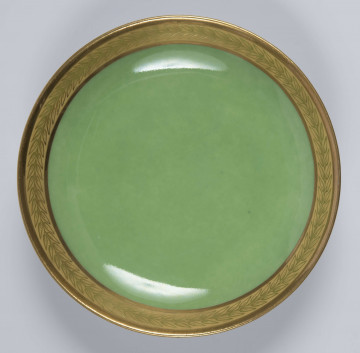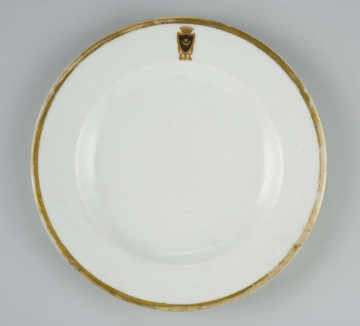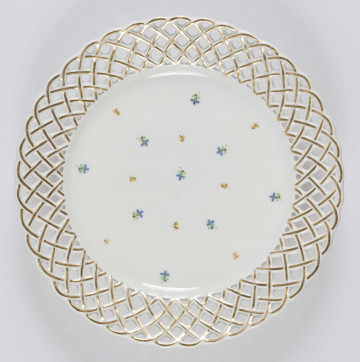
Saucer
1827
National Museum in Lublin
Part of the collection: Polish porcelain
Established in 1804 in Baranówka by Michał Mezer, the faience and porcelain manufactory quickly became a valued factory of “white gold”, valued not only in Poland, thanks to experienced craftsmen brought from the factory in Korzec and rich clay deposits suitable for the production of ceramics.
Mezer focused on a variety of faience and porcelain products, which were hand-painted with flowers, herbs, and decorated with daub ornaments. In the beginning, the patterns and decorations were copied from Korzec catalogues, but soon they developed their own motifs decorating porcelain figurines and whole dishes. Increased interest in the products from Baranówka contributed to the production of many different products, from tableware, plates, platters, vases, through saucepans, baskets, serving plates, salad bowls, dessert bowls and tableware accessories, to amphorae.
An amphora (Latin amphora, Greek amphoreús) is a tall, slender vessel with an elongated body, a narrow neck with a split rim and two symmetrically placed handles on the sides. In ancient times it was used mainly for transporting and storing wine, oil and honey. One of the curiosities is the still existing Monte Testaccio (also known as the ancient dump) - an artificial hill located in Rome, made almost exclusively of pieces of broken amphorae. In ancient times, however, amphorae were not exclusively utilitarian vessels. Large Greek panathenaean amphorae, filled with olive oil from the sacred grove of Athena, were prizes for the winners of the panathenaean games held in Athens from 566 BC.
The vessel, so popular in ancient Greece and Rome, regained its popularity in the Classical era as a decorative object, becoming an integral part of interior design.
Author / creator
Dimensions
cały obiekt: width: 25 cm, diameter: 8,5 cm
Object type
dish
Technique
overglaze paints
Material
porcelain
Creation time / dating
Creation / finding place
Owner
The National Museum in Lublin
Identification number
Location / status

1827
National Museum in Lublin

1829
National Museum in Lublin

1815 — 1825
National Museum in Lublin
DISCOVER this TOPIC
Museum of King Jan III's Palace at Wilanów
DISCOVER this PATH
Educational path